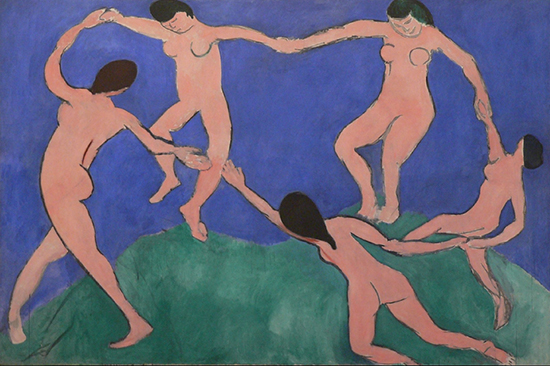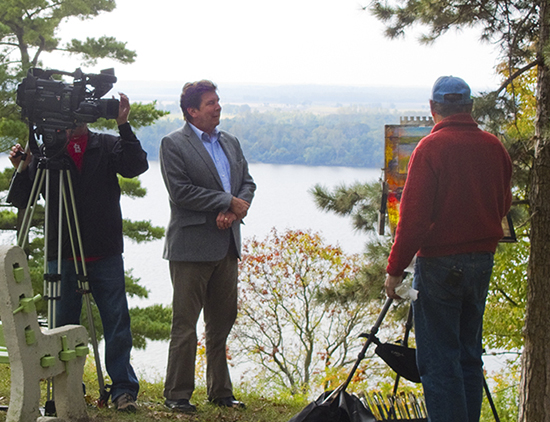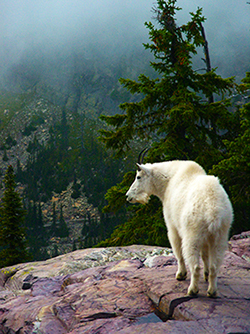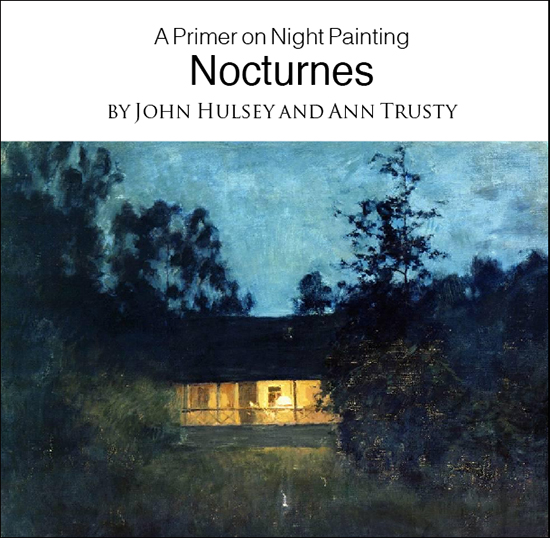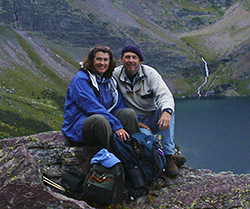Voices of Experience - Jason SacranVoices of Experience Jason Sacran
Jason Sacran is an artist/painter living in Arkansas. He has been invited to many juried exhibitions and his work has received awards with organizations such as the Oil Painters of America and the American Impressionists Society and has won top honors repeatedly at plein air events nationwide. Jason was kind enough to accept our invitation to do an interview for The Artist's Road.
I have always been creative—building things, drawing, etc. Being somewhat talented you could say, I was always the “artist” kid in school. For the most part, my teachers were encouraging and allowed me to draw in my free time and sometimes even during class, which I did no matter if they let me or not. My family was also supportive, especially my mother. If it weren't for my mother and a guidance counselor getting together and submitting my drawings to an art school, I would never have had the chance to pursue art outside of anything other than a hobby. Fortunately they did, and I went to a graphic design school called Nossi College of Art and Design in Nashville, TN. After a few semesters there, I changed paths from graphic design to fine art painting and switched to Tennessee Tech University in Cookeville, TN. That is where I finished my studies and received my Bachelors of Fine Arts degree. My wife, Rebekah, was also a big encouragement to me, especially in the beginning when I needed it most. I have had several artist friends that have been very encouraging too, especially an artist friend named John Lasater. See our Voices of Experience interview of John Lasater.
Although I had some good teachers growing up, art was not a strong suit in the grade schools I attended. For example, the English teacher taught the only art class available in high school. And though she tried her best, it was not much of an art education experience. In college, I had some good teachers. The one that stuck out to me the most was Christine Koczwara. She had been a combat artist in Vietnam (the first female combat artist in the county) before becoming an art instructor at TTU. She really pushed me to grow and refine my drawing skills. She was also my first painting instructor. I had not really ever painted before going to TTU. In fact, I was 21 years old before I ever really picked up a brush. After college, I pursued painting on my own, gaining experience from going to the Portrait Society of America conferences, reading books, looking at other artists' works, and putting in the hours of hard work.
When were you first able to pursue your painting full-time?
Is your primary focus on painting from life alla prima? Can you tell us something about what subjects inspire you?
I love painting at night and have been doing it ever since I started painting plein air. This tree is located on the square in Sonoma, California. It is a very large Eucalyptus tree sent by President Abraham Lincoln as a promise to the people of Sonoma. It was sent as a sapling by ship, arriving around Cape Horn when Sonoma was the capital of California. President Lincoln was bringing the railroad to California to get gold and silver to bring back to Washington, D.C., to finance the Union Army during the Civil War. The people in Sonoma were afraid he would only bring the railroads to the mines and forget about bringing them all the way to the capital. He sent this tree as a symbol of his promise that he would bring the railroad to Sonoma, and he did not go back on his word.
Some of the challenges in painting at night include a lack of light both in the scene and on the canvas. I have used several light systems to light my canvas such as a Revilite, which is a great light system although a little pricey. I have found that although it has a dimmer, it can be too bright in some cases. I have used a grill light which I really like and I have used book lights, mostly clipped to my support. You can find these online or in stores. The best lighting situation is getting under a light pole or somewhere where there is a lot of ambient light such as being by a lit window or in a lit up town/city. Another challenge that can come with night time painting is the glare when you apply paint. I haven't really fully figured that one out, although sometimes I will paint more dry/with less mineral spirits/Gamsol, or I will utilize brush direction. There are other challenges as well, but those are the main ones for me.
Have you had the opportunity to travel to other parts of the world to paint?
Although I use acrylic from time to time, especially for block-ins in the studio, and I am not tied to any particular colors or brands, I primarily use oil paint and usually use Gamblin oil colors (bought nearly anywhere that sells art supplies). I utilize these colors (in order of my arrangement on my palette): Titanium White, Cadmium Yellow Medium (sometimes using Cad Yellow Light as well, depending on the painting), Cad Orange (rarely but sometimes Cad Red Light, mostly depending on sun situations), Cad Red Medium, Alizarin Crimson, Ultramarine Blue, Sap Green and/or Viridian, and Ivory Black (a great neutralizer, especially when trying to eliminate saturation in a neutral). I don't usually use mediums, but occasionally I will. For extending dry time, especially in studio work and plein air that requires multi-sessions and I need it to be wet into wet, I will mix in clove oil. It’s very inexpensive on the internet or in a pharmacy. It also gives my paint more flow and a buttery consistency. I like the smell of it, too. For speeding dry time, which I like when doing multi-session plein air, especially in plein air events, I will dip into Maroger medium as I paint. I use the Italian blend (linseed oil, beeswax and lead mixture). This medium is good to build up impasto brush strokes, as well. I am able to get this from a painter friend, Andre Lucero. I will also use linseed oil sometimes. As far as thinning down my paint or cleaning my brushes, I use Gamsol, an odorless mineral spirit made by Gamblin. This seems to be the safest mineral spirits available.
When it comes to supports or canvases, I use several substrates. My favorite (it's expensive!) is Claessens #13 double primed. It is a fine weave utilized mostly by portrait painters. I also use a medium weave Claessens #15, a landscaper's choice linen canvas. I most like these linens adhered to a panel or gatorboard. You can get these supports on panels at several places such as Raymar, Windriver Arts, and Source Tek. These linen canvases can be bought by the roll at most art supply stores, too. I buy these rolls online from Dick Blick and Jerry’s Artarama. I also use Centurion Linen panels. These are much less expensive, especially the multimedia boards which are acrylic primed. These panels are surprisingly good for the price. They make an oil primed panel, as well. I hardly ever use cotton canvas.
I also use Viva or shop paper towels as I like the thickness of the towel. I use a large airtight brush cleaner used by most plein air painters. In the studio I use a large, plastic Folgers coffee container with a Bob Ross screen cleaner. I mostly like Rosemary & Co. Brushes, mainly the Ivory long flats. You can look up my brush set to see what I use. Just look up Jason Sacran on the Rosemary site search bar. I also use a few palette knives from small to medium. These can be bought anywhere that sells art supplies. I sometimes use a small squeegee when designing or drawing my scene. My good friend, Charlie Hunter introduced me to it. Go to Charlie's materials/store section for more info on the squeegee. I like to sit when painting too, and use a metal folding bar stool from Walmart. It's less than $20. It is cheap enough that when I used to fly to events, I would buy one and leave it or give it away at each event because I couldn't carry it on a plane. It is taller, so it's good for painting. I have one that I sawed the legs down to make it fit in my bag, too. I use a long backpack. You can buy these online or in sporting goods stores. I also used to use a 24” Milwaukee rolling hardtop tool bag. They don't make them anymore but I am sure you can find one comparable at a hardware store or online. These were great for plein air events that you would have to fly to. It would fit all materials and supplies including my Soltek easel. They were indestructible. The wheels were also built to take the roughest terrain and the hardtop was good for sitting on. I would also recommend using sunscreen, taking water (and possibly snacks) with you, consider using latex or a specialized glove to not get paint into your hands/skin, a hat and/or an umbrella. I wear a neutral colored hat and sometimes use a neutral colored beach umbrella bought at any hardware store. I would recommend buying one that has a weighted metal or concrete base for stability in any wind situations.
For a retouch varnish I use Winsor and Newton retouch spray. This is good for plein air. Not only will it dry quicker, but it revitalizes dry spots giving the entire painting a satin sheen. In fact, I will sometimes use it as a final varnish because it gives me the chance to paint on it in the future if I want to. I will also use W&N final varnishes too. You can find them in matte, satin, and gloss. I always use spray varnishes because it's easier and spreads well. To see more of Jason Sacran's paintings go to: Jason Sacran Fine Art. All images © Jason Sacran |
Become an Artist's Road Member Today!
Already a Member?Log in here. To renew your membership, log in and follow the links. Search the SitePerspectivesNot ready to become a Member yet? Subscribe to our free email postcards, "Perspectives". Enter your email address here.
Member ContentFree ContentThe Artist's Road StoreNocturnes - A Primer on Night Painting Filled with inspirational examples by the masters of nightime painting, this little book is sure to fire up your creative energies. Never tried painting at night? We show you how it's done with a step-by-step-oil demo and a tale of night painting in the wilds of Rocky Mountain National Park. The Primer on Night Painting - Nocturnes is a 7 x 7" PDF download with 40 pages of text and images. It includes a gallery of paintings by masters of the nocturne, information to inspire and encourage you in your plein air nocturne painting, an illustrated step-by-step demo and tips for working in pastel and oil. Also available in a softcover edition. Check out the tools and other products that we use in our own art and travels in The Artist's Road Store. We only offer things for sale that we enthusiastically believe in.
About Us
|
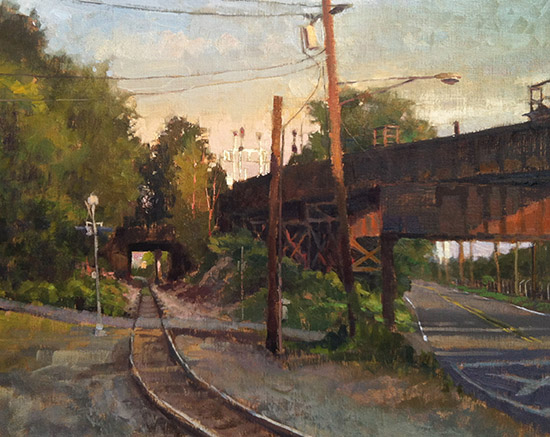
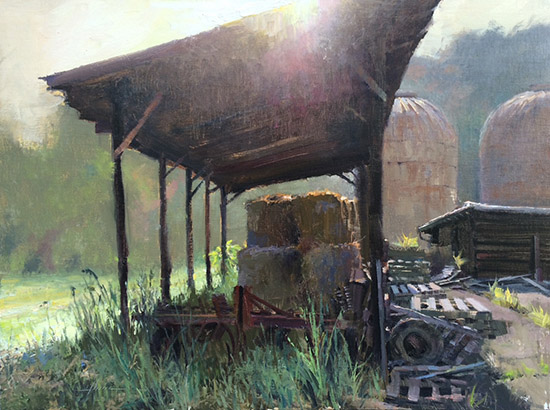
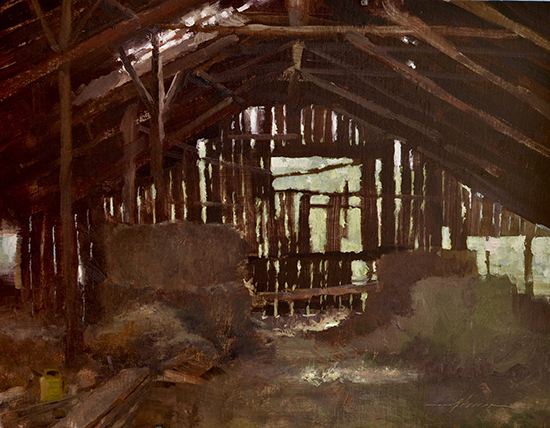
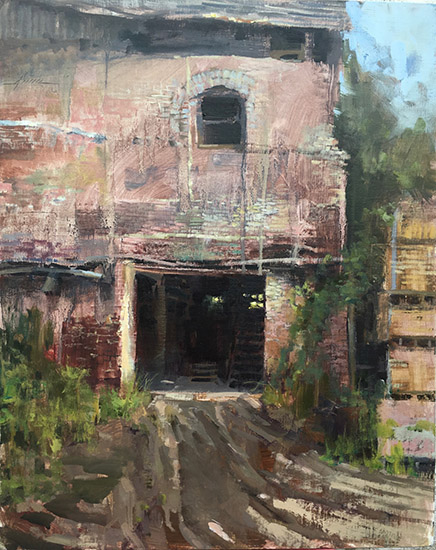
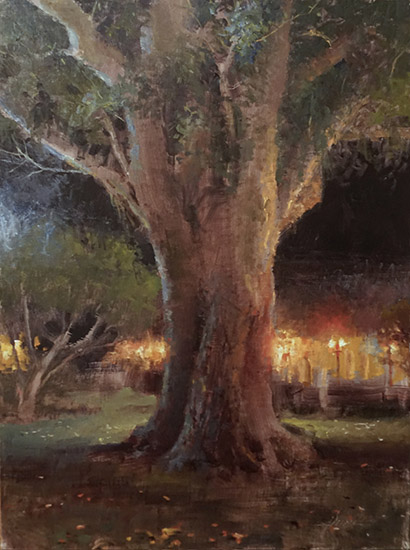
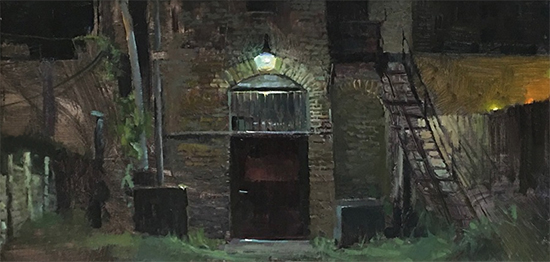
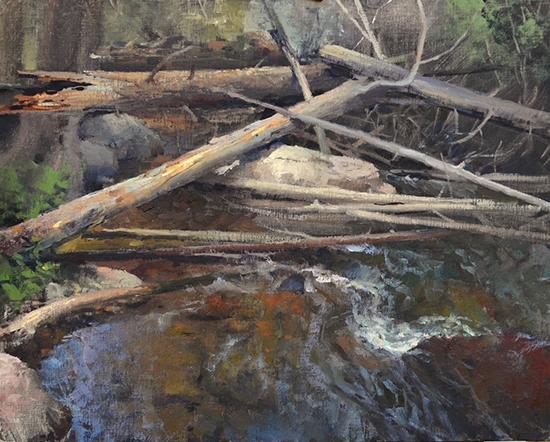
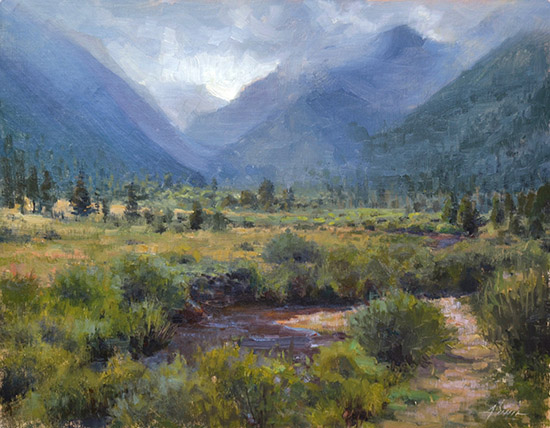
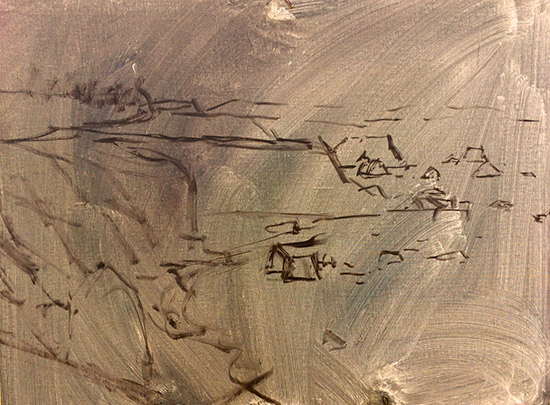 My process: After setting up my easel and figuring out what size canvas I want to use, I will usually tone my canvas to a mid-value neutral grey (going more warm or cool depending on the scene). I do this so that I am not fighting the white of the canvas and I find it easier to control my color and value. I then make compositional marks or a drawing of my scene, designing what I want to paint. Although I am usually true to the scene, I am not attached to painting exactly what is in front of me. I will add, delete and move things around as needed to make a pleasing painting.
My process: After setting up my easel and figuring out what size canvas I want to use, I will usually tone my canvas to a mid-value neutral grey (going more warm or cool depending on the scene). I do this so that I am not fighting the white of the canvas and I find it easier to control my color and value. I then make compositional marks or a drawing of my scene, designing what I want to paint. Although I am usually true to the scene, I am not attached to painting exactly what is in front of me. I will add, delete and move things around as needed to make a pleasing painting.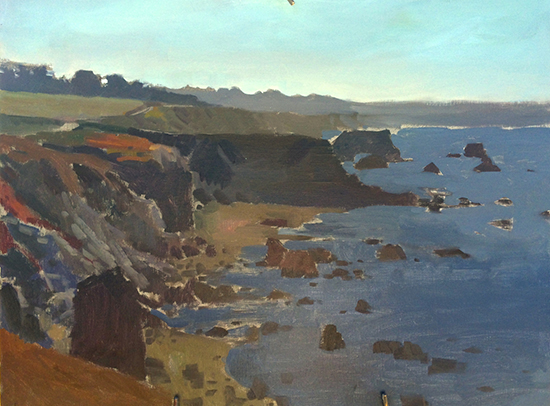 I will then begin laying color down, looking mostly at the largest shapes or shapes I believe will compose well. I attempt to get the color, value, and intensity correct in these shapes. This stage is my first statement or the block-in.
I will then begin laying color down, looking mostly at the largest shapes or shapes I believe will compose well. I attempt to get the color, value, and intensity correct in these shapes. This stage is my first statement or the block-in. 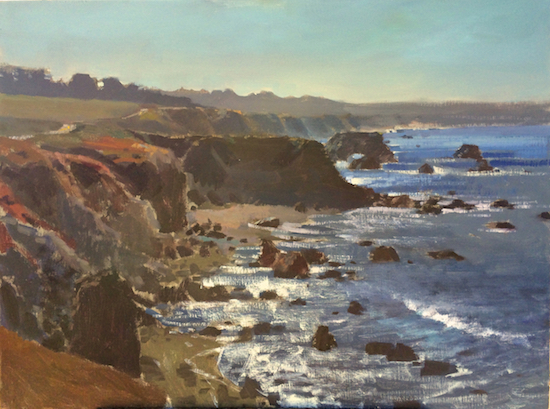 After my block-in is where I need it to be, I paint my second statement, going into each shape and breaking it down, looking at shapes within shapes, correcting color, value, and chroma. I do this as many times as needed until I have my painting just about complete. Then I go for the final touches which are the smallest details needed, such as finessing edges, tweaking saturation of color, and anything else that will make the painting true to what I am seeing. Once I deem the painting finished, I will usually sign it, even if I know I will be touching it up in the studio. I do this to have a more harmonious signature, meaning I will utilize the colors already on my palette or carve into the canvas while still wet.
After my block-in is where I need it to be, I paint my second statement, going into each shape and breaking it down, looking at shapes within shapes, correcting color, value, and chroma. I do this as many times as needed until I have my painting just about complete. Then I go for the final touches which are the smallest details needed, such as finessing edges, tweaking saturation of color, and anything else that will make the painting true to what I am seeing. Once I deem the painting finished, I will usually sign it, even if I know I will be touching it up in the studio. I do this to have a more harmonious signature, meaning I will utilize the colors already on my palette or carve into the canvas while still wet. 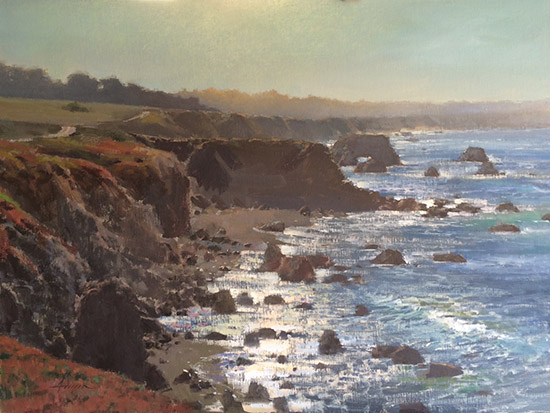
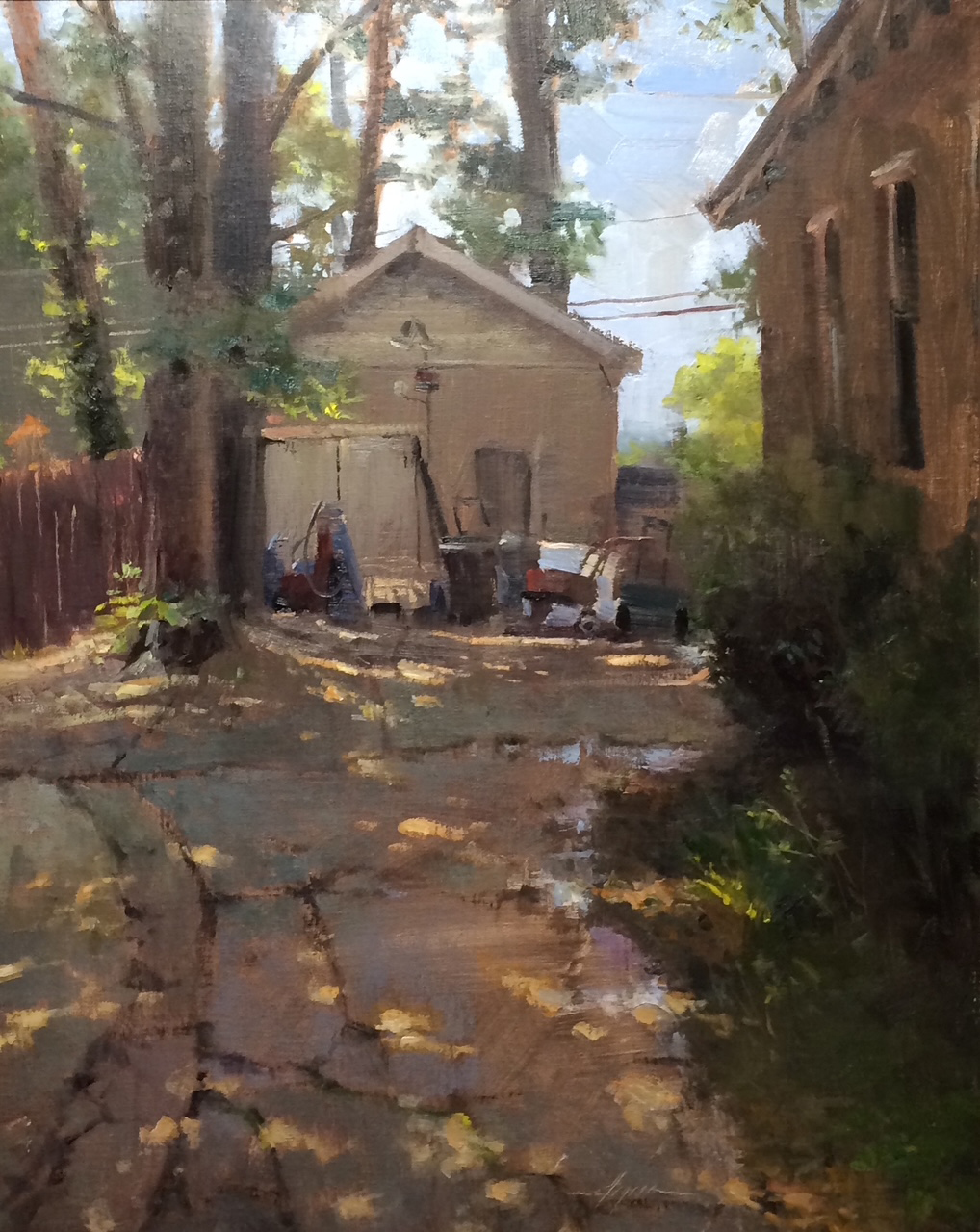
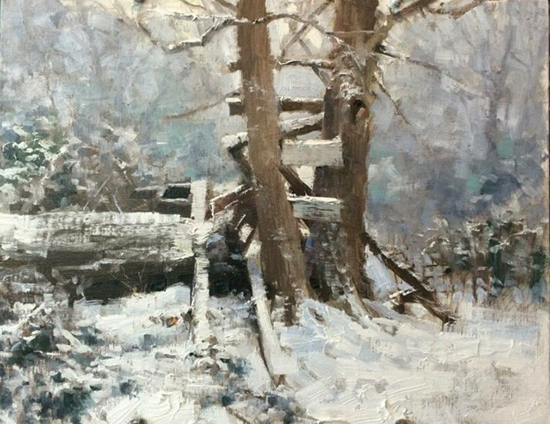
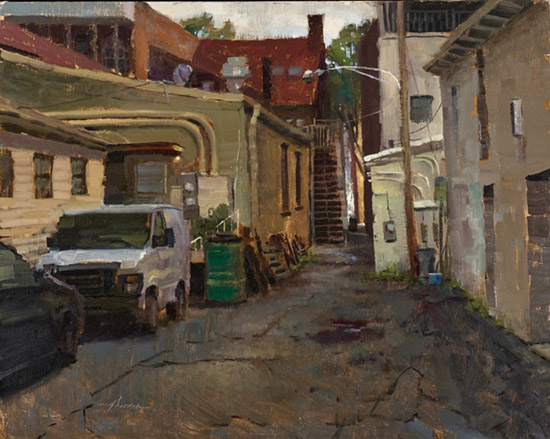
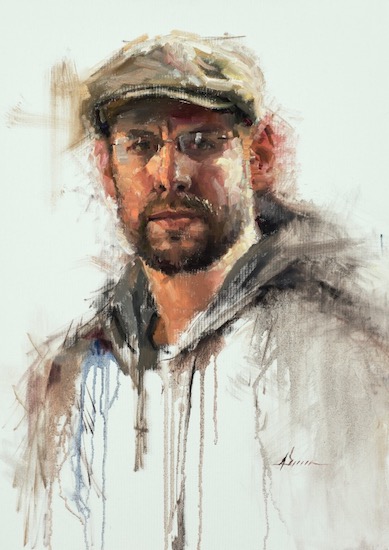 Also, I would recommend finding like-minded artists to “hang out” with. Having an organization, group or individual artist friends can make a big difference. They can push you to grow, critique your work (as well as you critiquing their work) and watching other artists work and progress
Also, I would recommend finding like-minded artists to “hang out” with. Having an organization, group or individual artist friends can make a big difference. They can push you to grow, critique your work (as well as you critiquing their work) and watching other artists work and progress 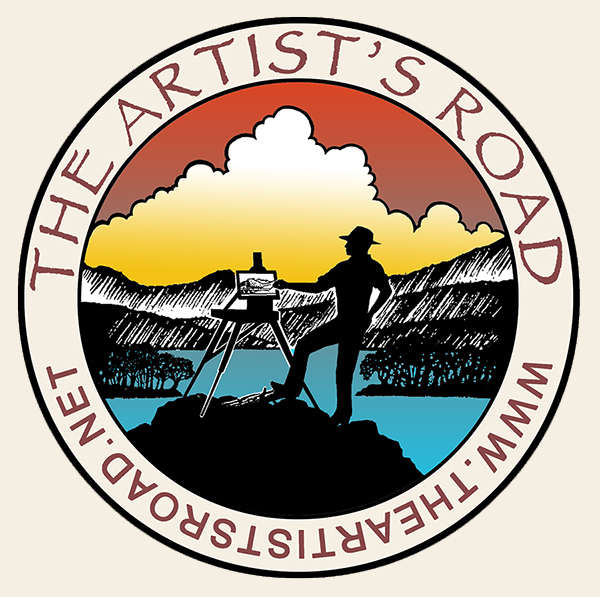
 Voices of Experience:Christine Code
Voices of Experience:Christine Code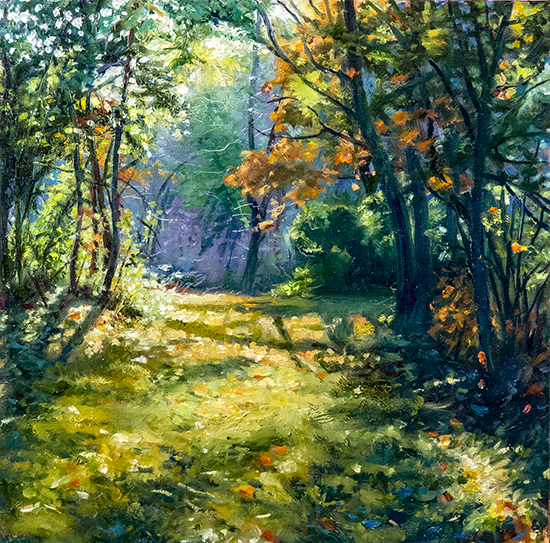
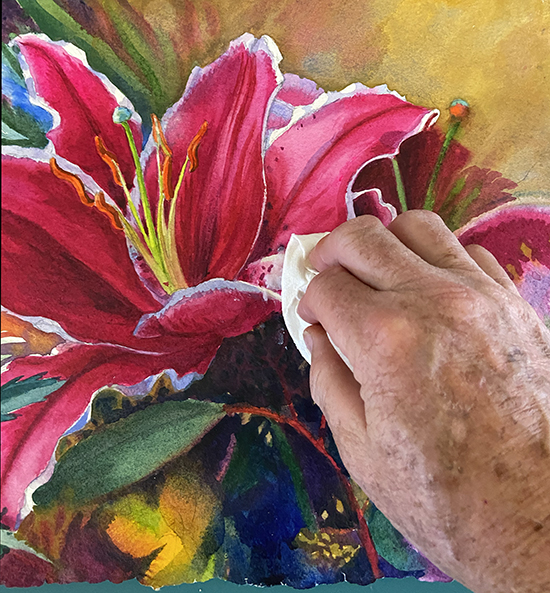 ing Watercolors
ing Watercolors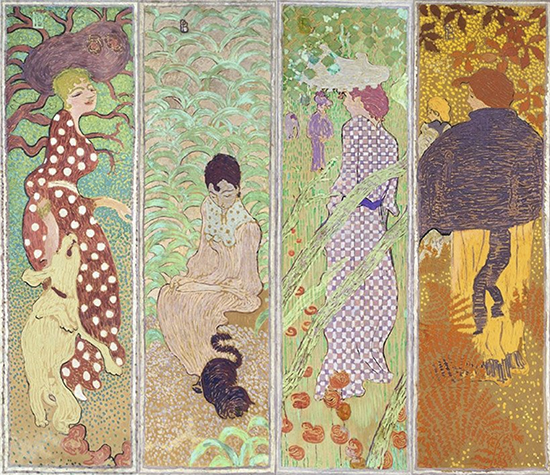
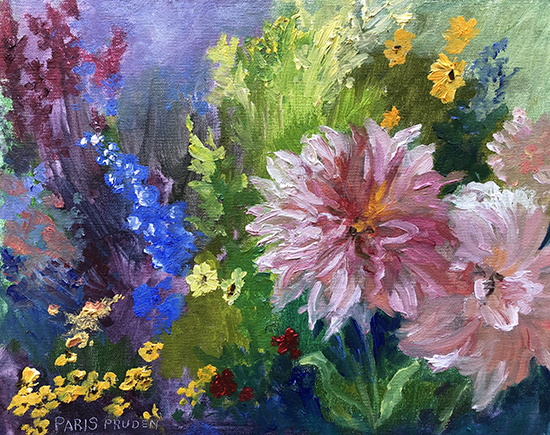
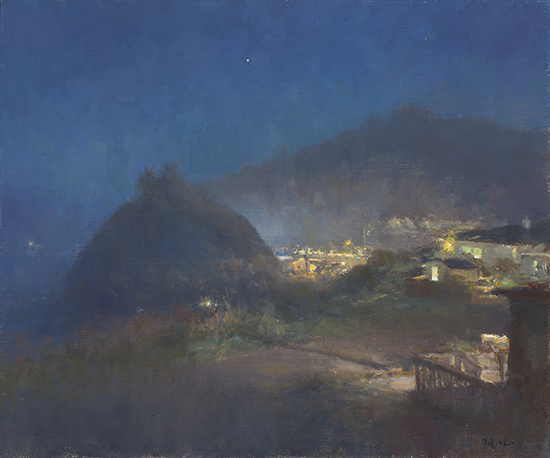
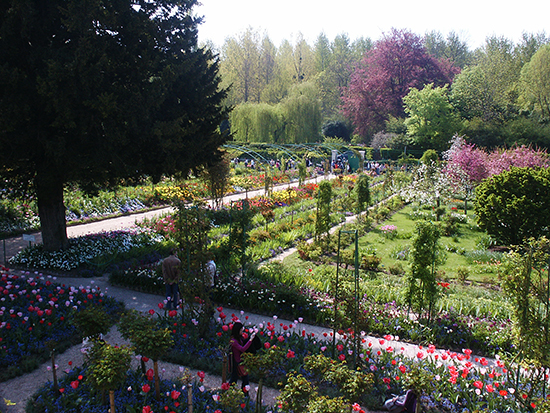 Inspiration in Monet's Gardens
Inspiration in Monet's Gardens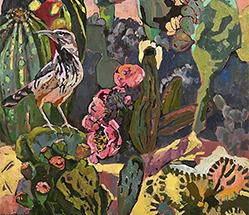
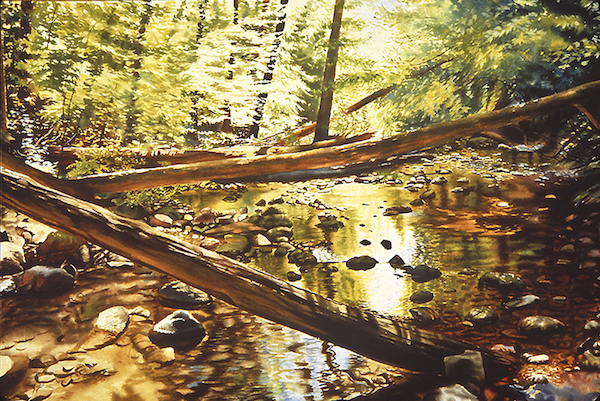 The Watercolor Medium
The Watercolor Medium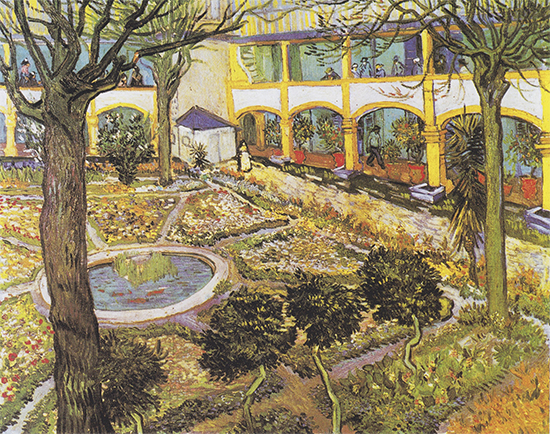 Paintings & Their Places
Paintings & Their Places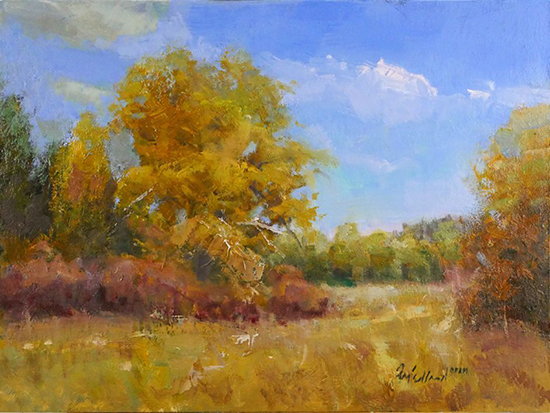
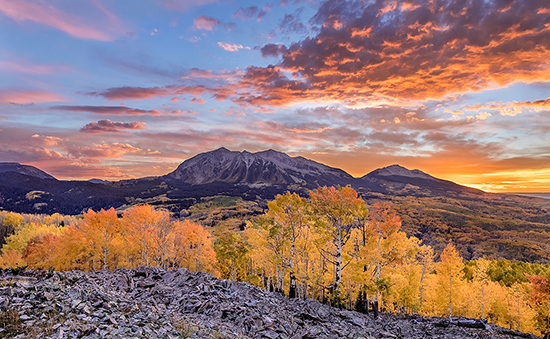 Essential Photo Tools for the Landscape Artist
Essential Photo Tools for the Landscape Artist